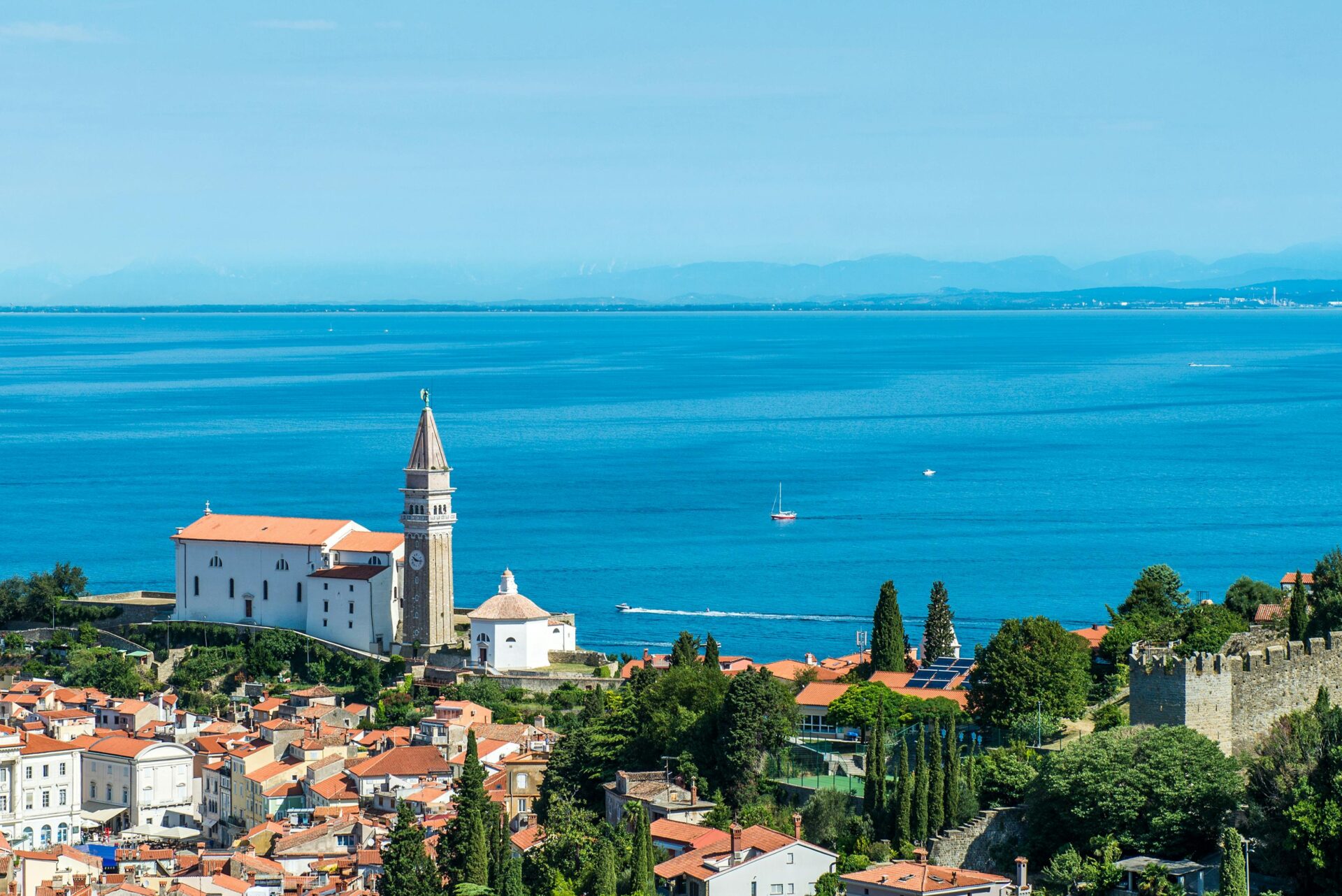Tucked away in Italy’s northeastern corner, Trieste captured my heart with its unique blend of Italian charm and Central European elegance. Walking along its sunny seafront promenade, I felt transported to a place unlike anywhere else in Italy – where coffee house culture meets Mediterranean lifestyle.
Trieste is perhaps the most cosmopolitan and multicultural city in Italy, serving as a maritime gateway where Italian, Germanic, and Slavic influences converge into something beautifully distinct.
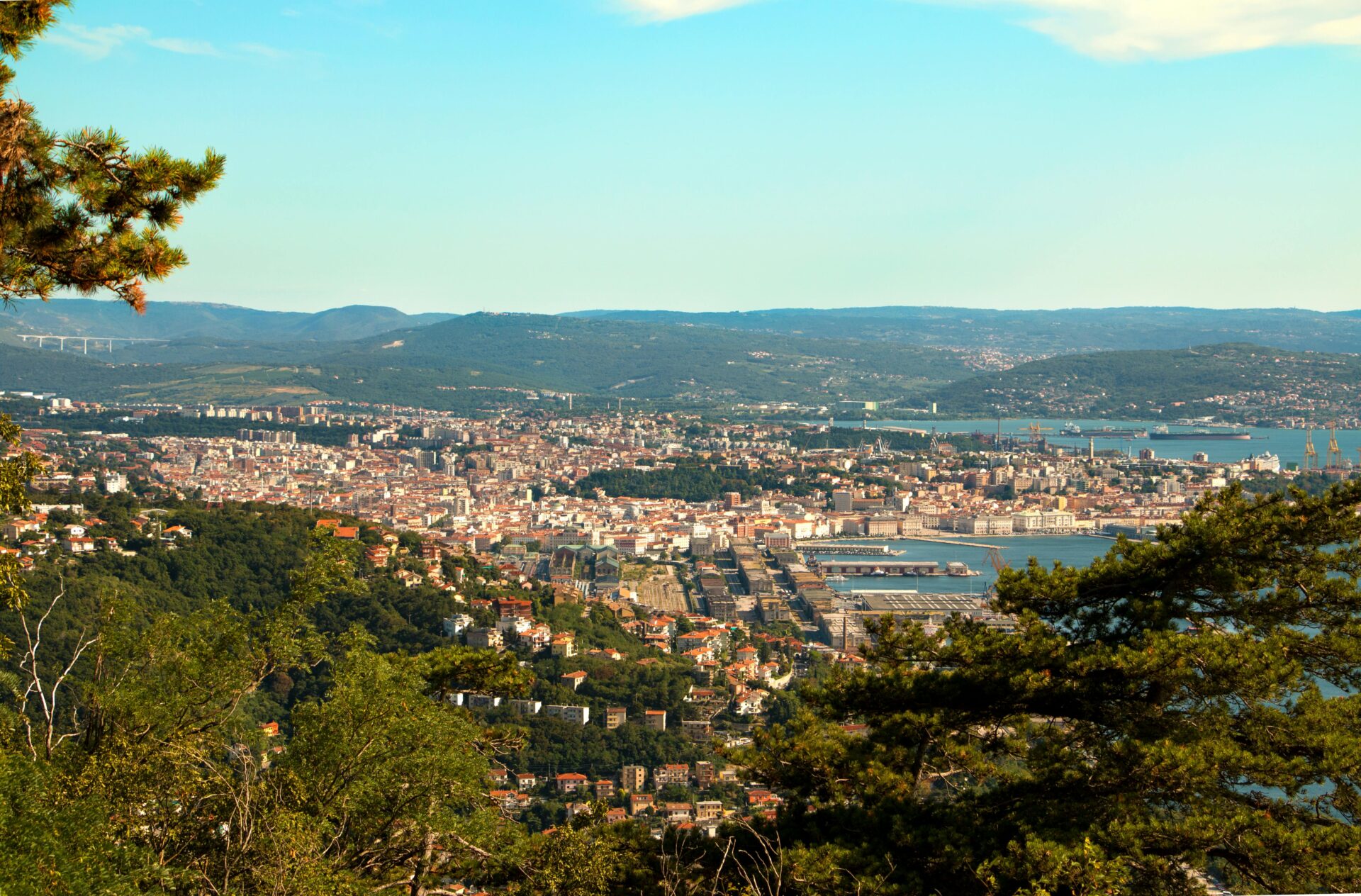
This captivating port city sits at the crossroads of worlds, just a stone’s throw from the Slovenian border. During my visit, I wandered through grand imperial buildings that reminded me more of Vienna than Venice – a testament to Trieste’s Habsburg past. Yet the melodic Italian conversations floating from seaside cafés quickly reminded me I was still in Italy, if only its most uniquely positioned corner.
What makes Trieste truly special is its role as a deep-water port connecting northern Italy with Germany, Austria, and Central Europe. As I sipped espresso in a historic café, I watched this cultural fusion play out before my eyes – in the architecture, the food, and the diverse faces of locals going about their day.
If you’re seeking an Italian experience that breaks the mold, Trieste offers a refreshing alternative to the country’s more familiar destinations.
Trieste: A Crossroad of Cultures
Trieste sits at the intersection of Latin, Slavic, and Germanic worlds, creating a unique cultural blend that’s evident in everything from its architecture to its cuisine. This special position has made the city a meeting point where different traditions have merged over centuries.
A Historical Melting Pot
Walking through Trieste feels like stepping through multiple European countries at once. I’ve always been fascinated by how this city brings together Italian, Austrian, Slovenian, Croatian, and Jewish influences in such a seamless way. The city’s position at the northeastern edge of Italy, bordering Slovenia and near Croatia, has made it a natural gateway to the Balkans.
In Piazza Unità d’Italia, I can feel these cultural crosscurrents. This magnificent square opens to the Adriatic Sea on one side while being surrounded by buildings reflecting different architectural traditions.
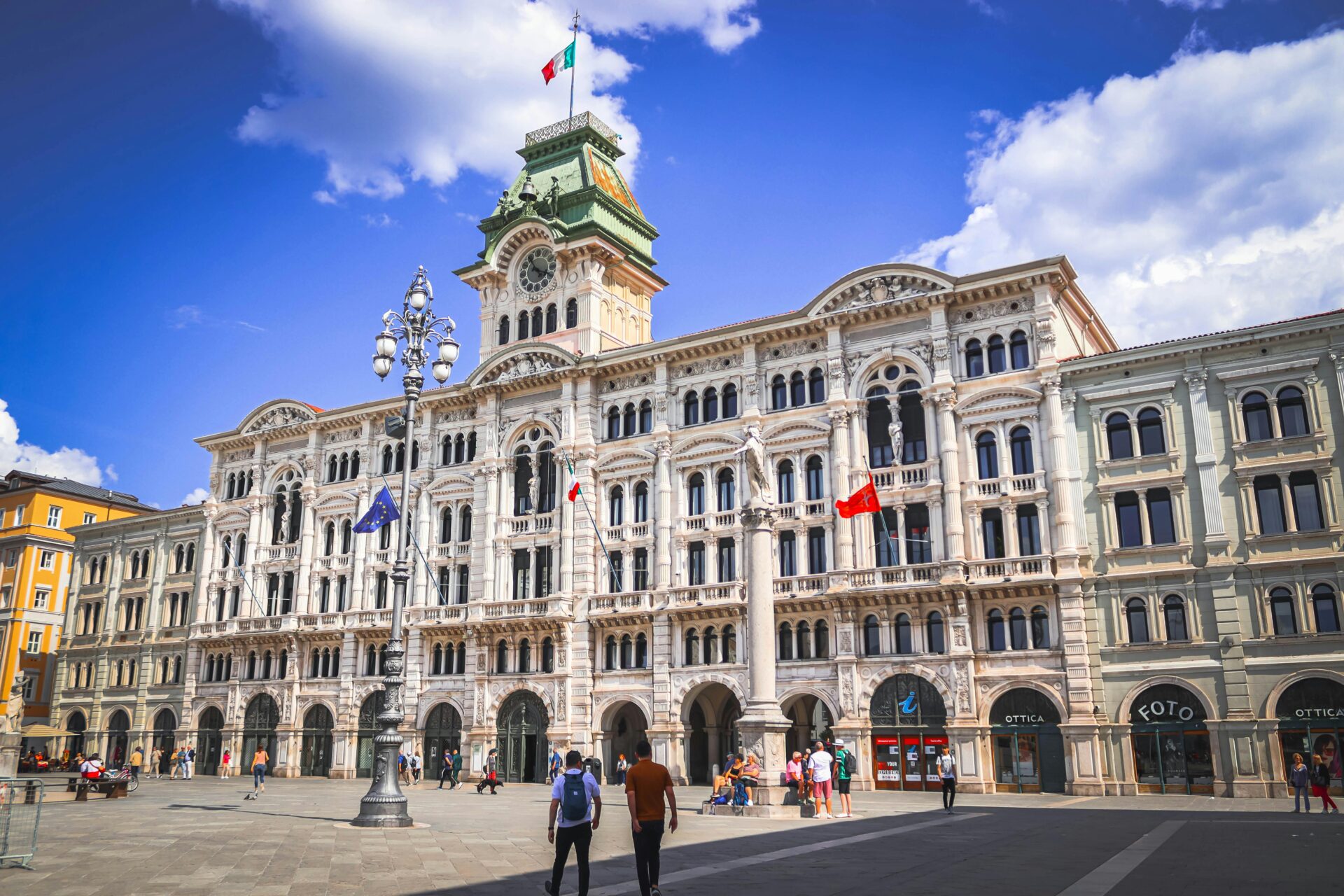
The Jewish community has deep roots here too. Their cultural contributions are visible in the beautiful synagogue and in the literary works of writers who called Trieste home.
The Influence of the Habsburg Empire
The Habsburg legacy is impossible to miss in Trieste. For nearly 500 years, this port city served as the Austrian Empire’s gateway to the Mediterranean, and that connection transformed its identity.
When I sip coffee in one of Trieste’s historic cafés like Caffè San Marco, I’m experiencing a tradition that connects directly to Vienna. These cafés became cultural institutions where writers and intellectuals gathered, creating a distinctly Central European atmosphere.
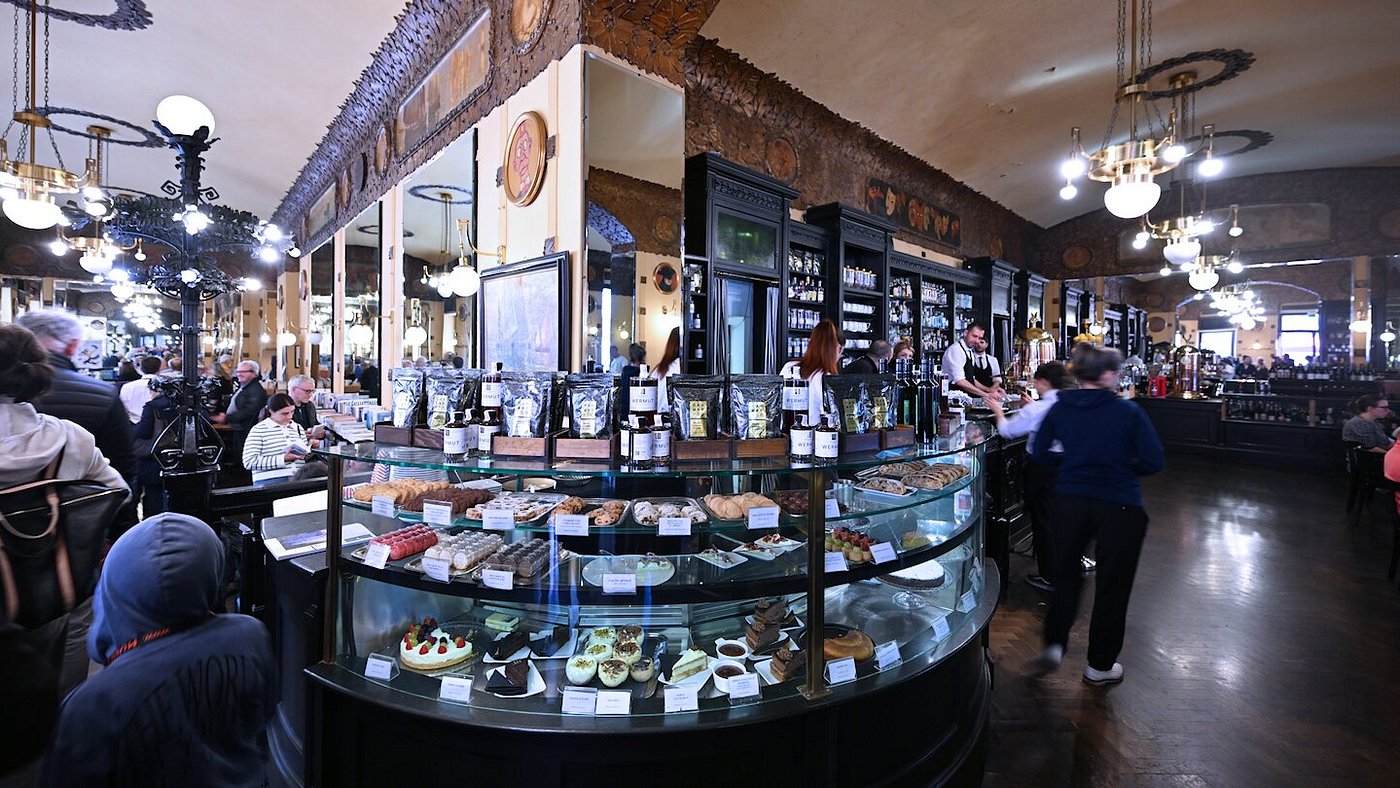
Image source: Tripadvisor
The Habsburg influence shows in the grand neoclassical and Art Nouveau buildings throughout the city. Miramare Castle, built for Austrian Archduke Maximilian, stands as perhaps the most stunning example of this imperial connection.
Even today, I notice how Triestines often take pride in their multicultural Habsburg past, which distinguishes them from other Italian cities and connects them to their Central European neighbors.
Architectural Marvels and the Grand Piazzas
Trieste’s streetscapes reveal a fascinating blend of architectural styles that reflect its unique position between Italian and Central European influences. The city’s buildings tell stories of imperial grandeur, maritime prosperity, and cultural exchange.
Neoclassical Elegance and Art Nouveau
Walking through Trieste, I’m always struck by the magnificent neoclassical buildings that line many streets. These elegant structures, with their symmetrical facades and classical columns, date back to the Habsburg era when Trieste flourished as the empire’s crucial port.
The city also boasts stunning examples of Art Nouveau architecture locally known as “Liberty Style.” I love discovering these gems with their decorative floral motifs, curved lines, and innovative use of materials like iron and glass.
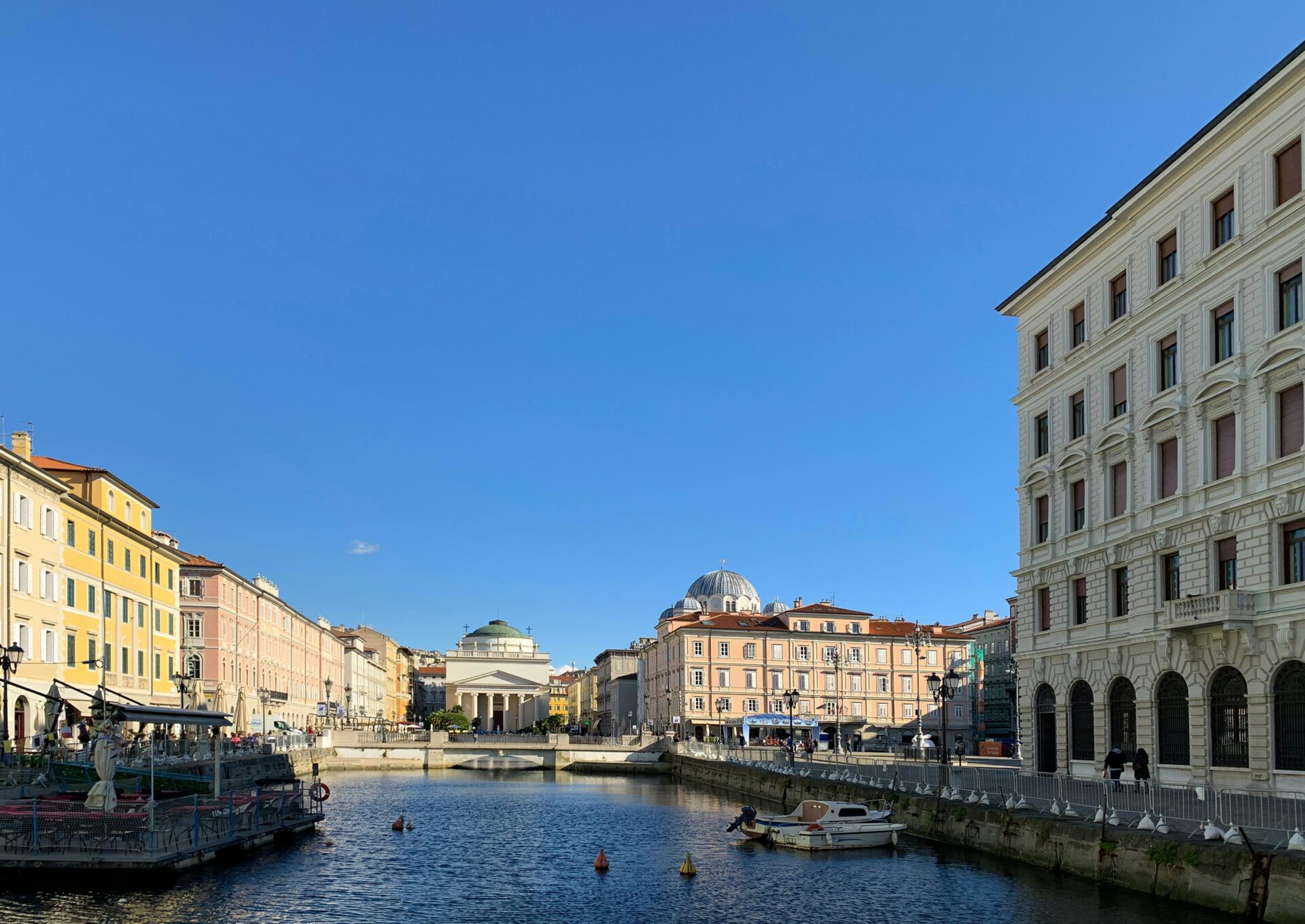
One of my favorite spots is the Canal Grande, where beautiful neoclassical palaces reflect in the water. Originally built to allow ships to unload their goods directly at the merchants’ warehouses, today it’s surrounded by charming cafés and impressive buildings.
Piazza Unità d’Italia and Beyond
Piazza Unità d’Italia takes my breath away every time I visit. As Europe’s largest seafront square, it opens dramatically to the Adriatic Sea on one side while being framed by magnificent Habsburg-style buildings on the others.
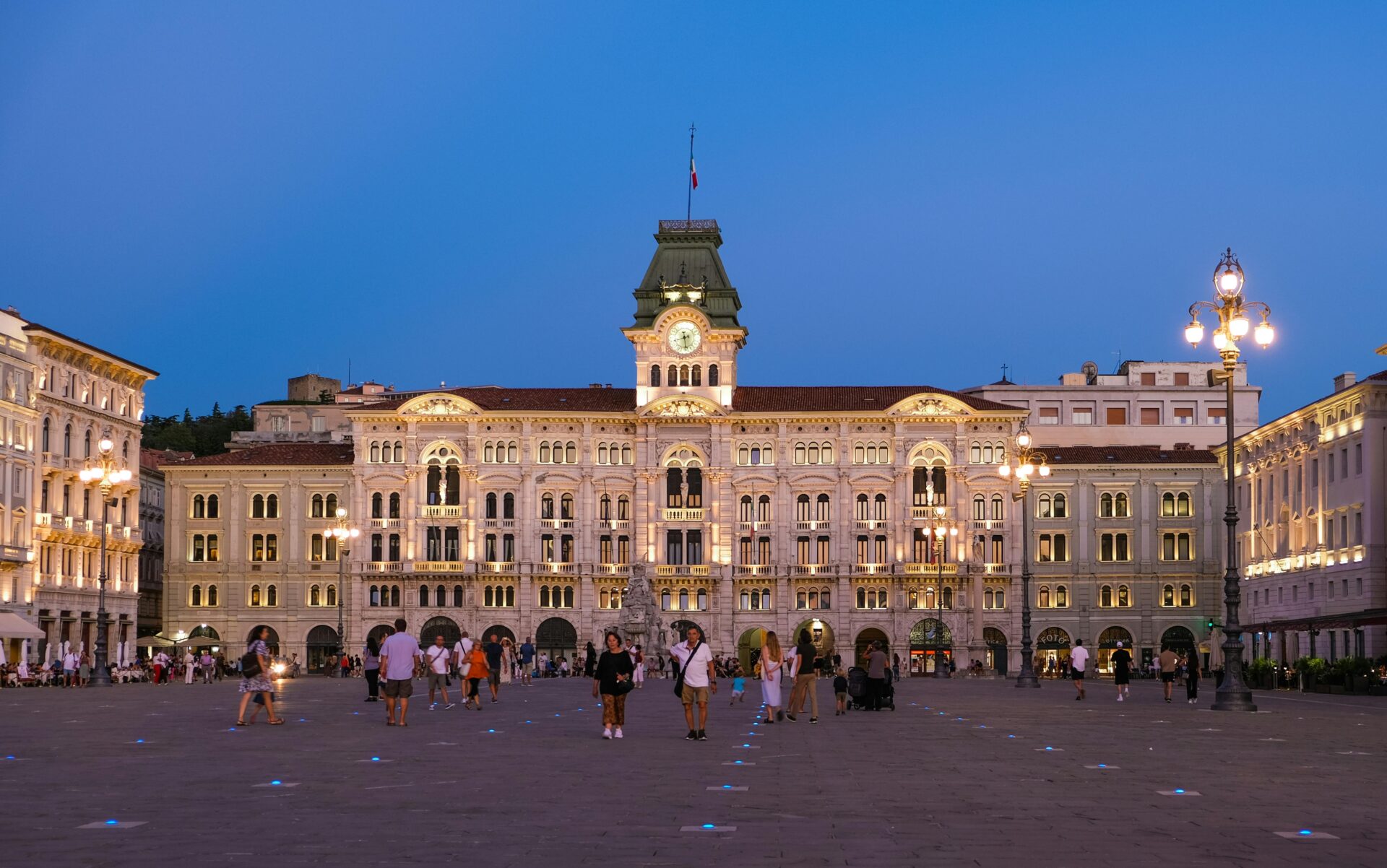
The square represents Trieste’s grandeur perfectly. I love standing in its center, admiring the ornate Government Palace and the impressive Palazzo del Municipio with its beautiful clock tower. In the evening, the whole piazza lights up, creating a magical atmosphere.
Beyond the main square, Trieste offers other notable piazzas worth exploring. The Piazza della Borsa (Stock Exchange Square) features the neoclassical Chamber of Commerce building, while smaller squares throughout the city serve as vibrant gathering spots for locals.
Each of these open spaces tells part of Trieste’s story, where Italian café culture meets Central European architectural traditions in perfect harmony.
The Heart of Coffee Culture
Trieste’s love affair with coffee runs deep in the city’s veins. When walking through the historic center, you’ll find the aroma of freshly roasted beans wafting from historic cafés that have stood for generations, serving as both social hubs and cultural landmarks.
Caffè San Marco: A Literary Landmark
I fell in love with Caffè San Marco the moment I stepped inside. Founded in 1914, this historic coffeehouse transports you to another era with its stunning Art Nouveau interiors and literary heritage.
Writers like James Joyce and Italo Svevo once gathered here, penning works while sipping espresso. Today, you can still feel this creative energy while enjoying a perfectly prepared caffè prepared by baristas who treat coffee-making as an art form.
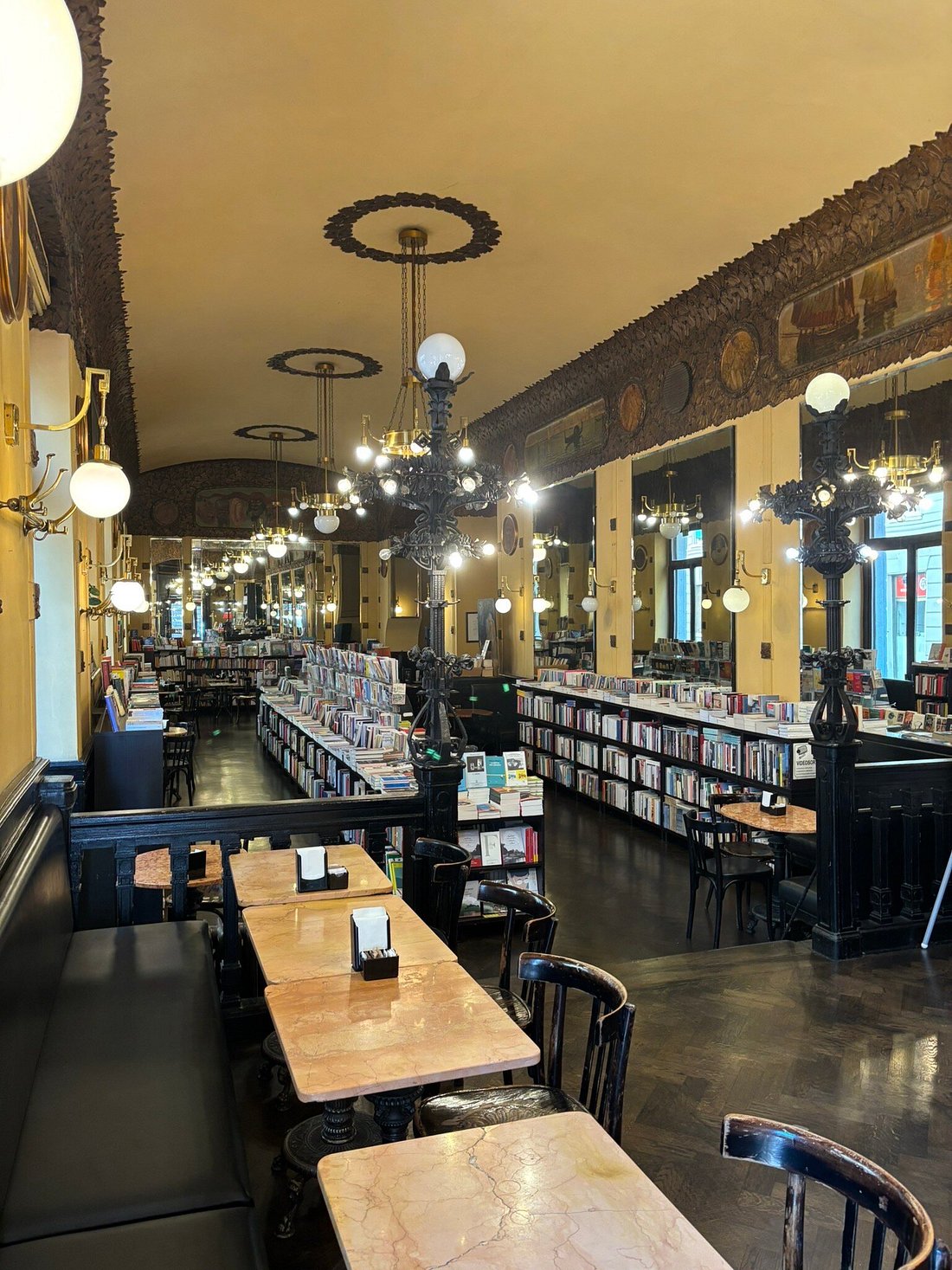
Image source: Tripadvisor
The café also houses a bookshop, allowing you to browse literature while savoring your drink. The marble tables, ornate ceilings, and warm lighting create an atmosphere that perfectly captures Trieste’s blend of Italian and Central European influences.
The Legacy of Coffee Houses
Trieste’s position as Italy’s coffee capital isn’t accidental. As the Mediterranean’s largest coffee port and home to major coffee brands, the city has built its identity around this beloved beverage.
The coffee culture here differs from the rest of Italy. While most Italians quickly drink their espresso standing at the bar, Triestines linger in their coffee houses, a habit inherited from Austria-Hungarian times.
I discovered that locals even have their own coffee vocabulary. Ask for a “capo in b” and you’ll receive a small cappuccino in a glass—a purely Triestine invention. The city consumes nearly twice as much coffee per capita as the Italian average!
These coffee houses represent more than just places to drink caffeine. They’re living museums where Habsburg elegance meets Italian warmth, creating spaces for conversation, contemplation, and community.
Literary Echoes and Artistic Vibes
Trieste’s streets whisper with creative energy that has inspired generations of writers and artists. The city’s unique position at the crossroads of Italian, Slavic, and Germanic cultures has fostered a rich intellectual environment unlike anywhere else in Italy.
Luminaries: Joyce, Svevo, and Saba
Walking through Trieste, I feel the ghostly presence of James Joyce around every corner. The Irish writer spent over a decade here, writing parts of “Ulysses” while teaching English at the Berlitz School. You can still visit Caffè San Marco, where Joyce would often meet with his friend and student, Italo Svevo.
Svevo, born Aron Ettore Schmitz, embodied Trieste’s multicultural identity. His masterpiece “Zeno’s Conscience” captures the city’s complex soul. I recommend visiting the Museo Sveviano to explore his life and work.
The poetry of Umberto Saba, meanwhile, breathes the very essence of Trieste. His famous bookshop, Libreria Antica, still operates today. I spent a peaceful afternoon browsing its shelves, feeling connected to the literary history.
Contemporary Art and Cultural Spaces
Today’s Trieste maintains its artistic spirit through vibrant galleries and cultural institutions. The Revoltella Museum houses an impressive collection of 19th and 20th-century art. Its modern wing particularly struck me with works by prominent Italian artists.
The annual Trieste Film Festival celebrates Central European cinema and draws filmmakers from across the region. When I visited last year, the screening venues were packed with enthusiastic locals and visitors alike.
Street art has also found a home in Trieste. Exploring the Cavana district, I discovered colorful murals that blend traditional and contemporary themes. This artistic expression continues the city’s tradition of cultural fusion.
Seaside Splendor and Natural Wonders
Trieste’s coastal landscape offers a stunning combination of natural beauty and architectural marvels that perfectly showcase the city’s unique position between Mediterranean and Central European influences.
The Adriatic Coastline and the Strada Costiera
The Adriatic Sea provides a breathtaking backdrop to Trieste’s urban landscape. Walking along the waterfront, I was struck by how the city embraces its maritime character with wide promenades perfect for sunset strolls.
The true gem of the region is the Strada Costiera, often called one of Europe’s most beautiful coastal roads. This scenic route hugs the cliffs between Trieste and Sistiana, offering dramatic views of the turquoise Adriatic waters below.
I recommend stopping at one of the small lookout points along the way. The contrast between the rugged limestone cliffs and the deep blue sea creates a photographer’s paradise, especially in the golden hour light.
Local fishermen still cast their lines from rocky outcrops, a timeless scene that connects present-day visitors to the city’s centuries-old relationship with the sea.
Miramare Castle and the Beaches of Barcola
Miramare Castle stands as Trieste’s most iconic landmark, perched dramatically on a rocky promontory overlooking the Adriatic. Built in the 19th century for Habsburg Archduke Maximilian, this white fairy-tale castle combines Gothic, Medieval and Renaissance elements.
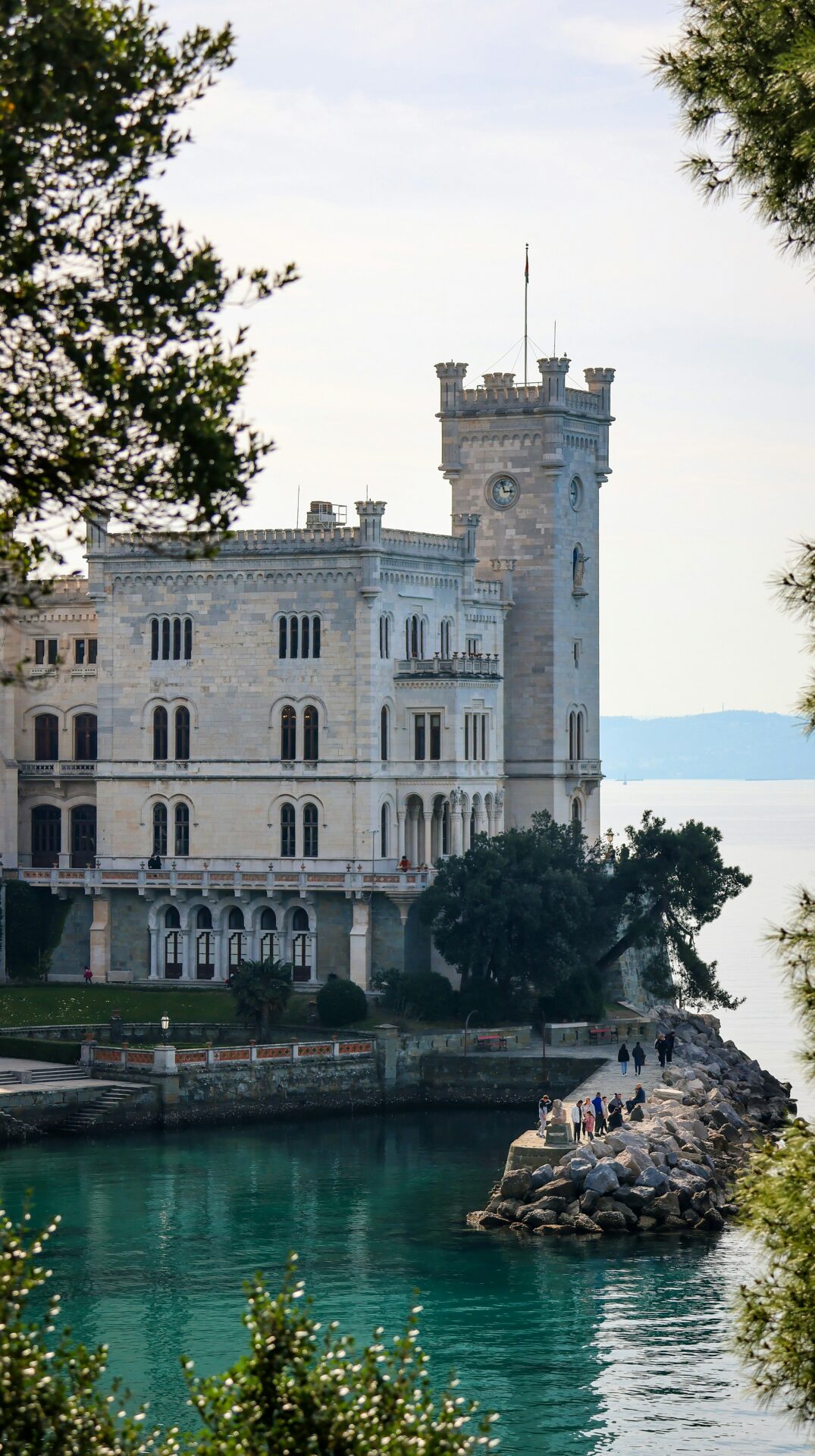
I spent hours exploring the castle’s richly decorated interior rooms and the surrounding botanical gardens. The park features exotic plants, sculptures, and small ponds with views that stretch across the Gulf of Trieste.
Just a short distance from Miramare lies Barcola, a popular stretch of coastline where locals and visitors alike gather to swim and sunbathe. The beach isn’t sandy but consists of concrete platforms that step down to the crystal-clear water.
During summer months, Barcola buzzes with activity as families set up for the day with picnics. The promenade behind the beach offers excellent gelaterias and cafes where you can enjoy an espresso while watching boats sail by.
Tantalizing Tastes of Friuli-Venezia Giulia
The food and wine scene in Friuli-Venezia Giulia offers some of Italy’s most distinctive flavors, blending Italian traditions with Central European influences that reflect the region’s unique cultural crossroads.
Culinary Fusion: Italian and Central European Flavors
Walking through Trieste’s historic cafés, I discovered a culinary landscape unlike anywhere else in Italy. The Habsburg influence is unmistakable in local dishes like jota, a hearty soup made with beans, sauerkraut, and potatoes that warms you on cool Adriatic evenings.
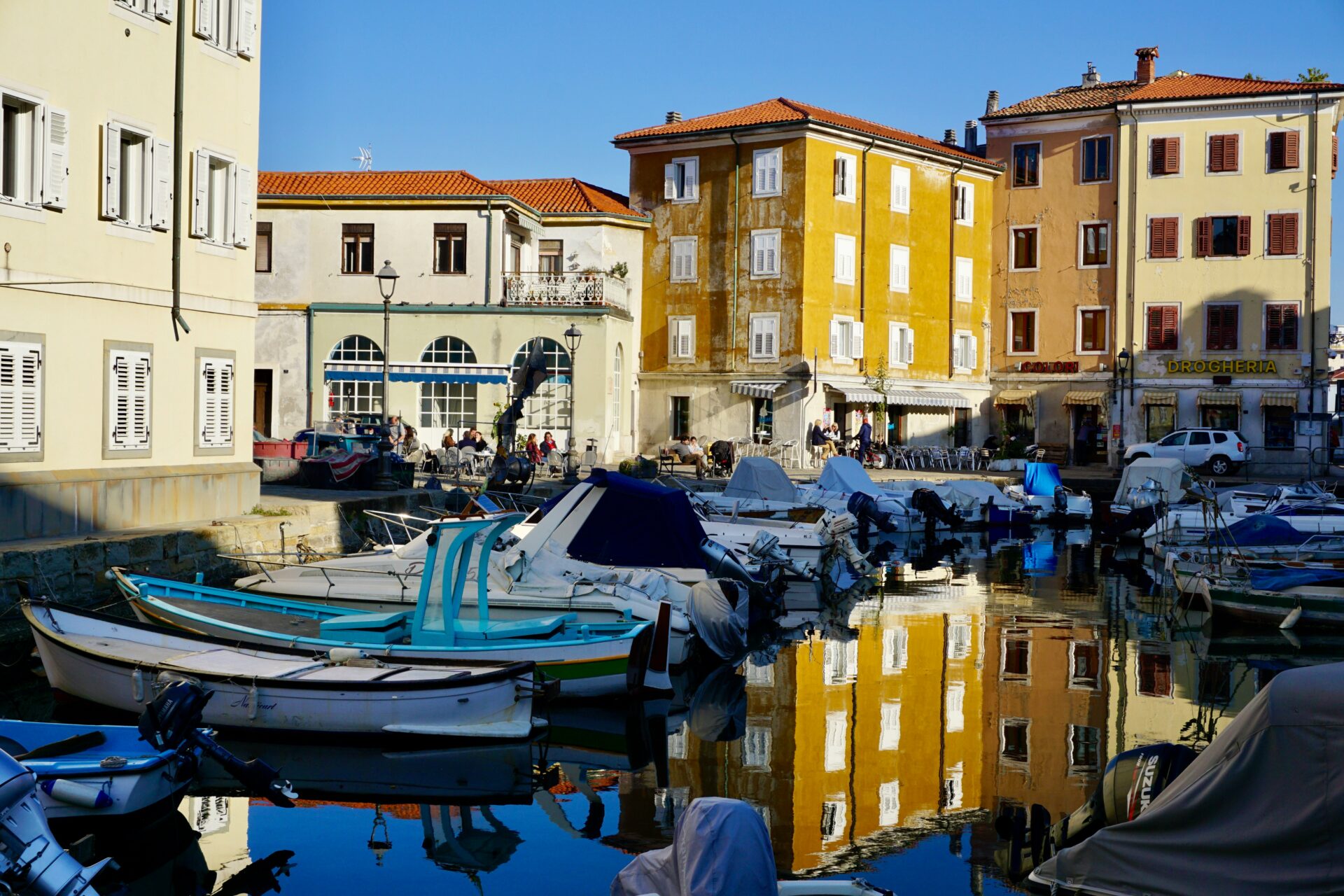
Muggia, just south of Trieste, offers seafood with Venetian influences – a reminder of the maritime trade that shaped this region. I found that even simple pasta dishes here tell a story of cultural exchange.
The region’s prosciutto di San Daniele rivals the more famous Parma variety, with a sweeter flavor profile that locals attribute to the unique microclimate where cool Alpine air meets Adriatic breezes.
Local specialties to try:
- Frico (crispy cheese pancake)
- Gubana (spiral pastry with nuts and dried fruit)
- Cjarsons (sweet and savory filled pasta)
Wine Trails and Local Delicacies
Friuli-Venezia Giulia produces what many consider Italy’s finest white wines. The region’s “Super Whites” showcase indigenous varieties like Friulano, Ribolla Gialla, and Malvasia Istriana that express the terroir beautifully.

I spent a day visiting small family wineries near the Slovenian border. Passionate vintners are reviving ancient techniques. Many practice natural winemaking methods, creating distinctive bottles that have developed a cult following among wine enthusiasts.
After touring the impressive Grotta Gigante, I enjoyed a rustic lunch. The meal featured local cheese and salumi paired with crisp Collio whites. The restaurant’s patio overlooked vineyards that stretched toward distant mountains.
The Colli Orientali region produces exceptional reds too. Especially Refosco and Schioppettino varieties that pair perfectly with the hearty local cuisine. Many wineries offer tastings with advance reservations.

